Where (and Where Not) to Hang a Mirror: A Pro’s Guide to Getting It Right
Over the years, I’ve installed a whole lot of glass and mirrors. I’ve worked side-by-side with designers and helped countless homeowners figure out that one perfect spot. And I’ll tell you what, I’ve seen mirrors do some incredible things—turning a cramped, shadowy room into a space that feels bright and alive. But I’ve also been the guy they call to fix the mistakes. I’ve seen mirrors that just feel… off, create weird reflections, and in some cases, are downright dangerous.
In this article
A mirror isn’t just a shiny object you hang on the wall. It’s a powerful tool for manipulating light and space. Getting the placement right is a bit of an art, blending a little physics, a dash of psychology, and a healthy respect for how people actually move around in a home. It’s not about some mystical secret; it’s about making smart choices that make your home look and feel better.
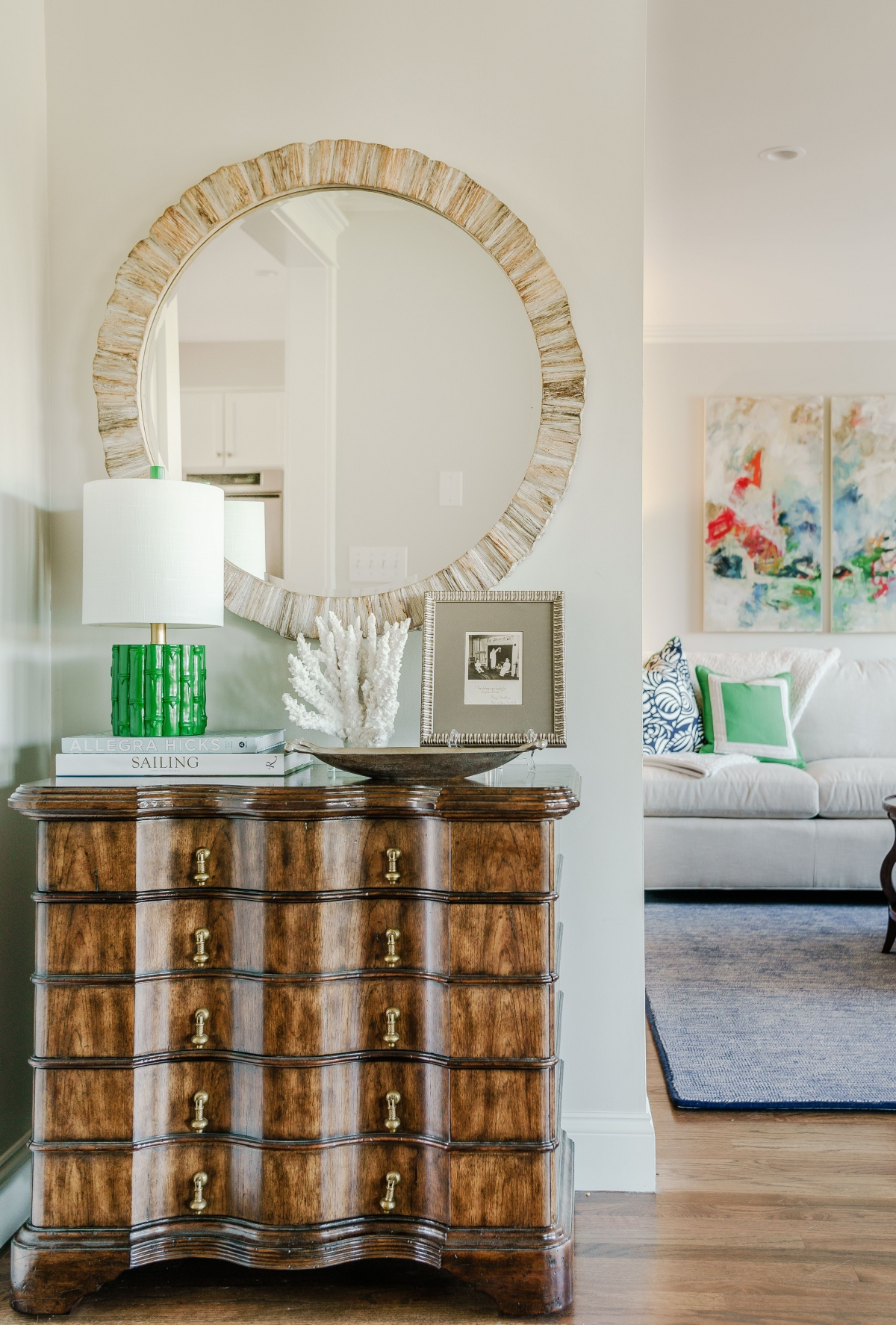
So, this isn’t just another list of generic tips. This is what I’ve learned from being in the trade, seeing what works and, more importantly, what really doesn’t. My goal is to help you use mirrors like a pro—effectively, safely, and with total confidence.
First, Let’s Talk About Light
Before we even think about which wall to use, you have to understand what a mirror is actually doing. At its heart, it’s a super smooth surface that bounces light back in a very predictable way. The basic rule is simple: the angle light hits the mirror is the same angle it bounces off. That’s it. Mastering that one idea is the key to everything.
Think of the light from your window like a spray of water. When it hits a normal wall, it scatters everywhere, which just brightens the room in a general way. But when that light hits a mirror, it bounces off in one focused direction, like a beam. This is why putting a mirror opposite a window is such a classic move. It doesn’t just create an illusion; it physically grabs that daylight and shoots it deeper into the room. In a darker, north-facing room, a big mirror on the wall opposite the window can honestly double the brightness and cut down on your need for lamps during the day.
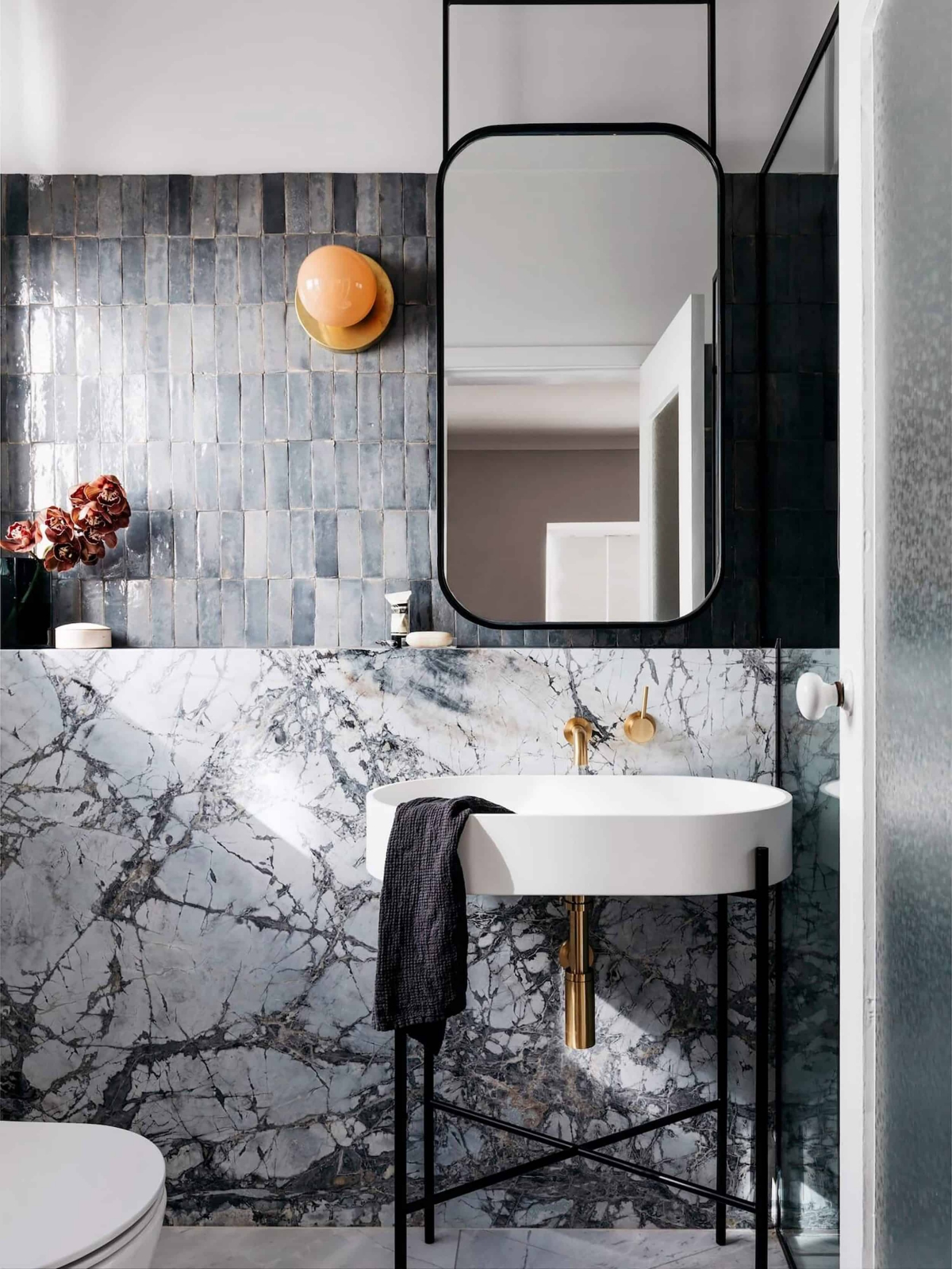
Of course, a mirror also creates that amazing illusion of depth. Our brains see the reflection and immediately interpret it as more space. But this is a powerful trick that can easily go wrong. What your mirror reflects is now a permanent part of your room’s decor. You have to choose wisely.
Common Mirror Mistakes I See All the Time
I’ve seen the same placement problems so many times they’ve become clichés. Usually, the intention is good—like trying to make an entryway feel bigger—but the side effects are overlooked. Here are the most common trouble spots and why you should probably avoid them.
1. Directly Facing the Front Door
This is probably the number one mistake. On paper, it makes sense: make the small foyer feel grand. In reality, it’s often a bad call. First off, it can be really jarring. Imagine walking into a home and being immediately confronted by your own reflection. It’s startling, especially for guests. I once had a client ask me to move a beautiful, expensive mirror because she said coming home exhausted and being met with her own tired face was just depressing. It set a negative tone for her the second she walked in.
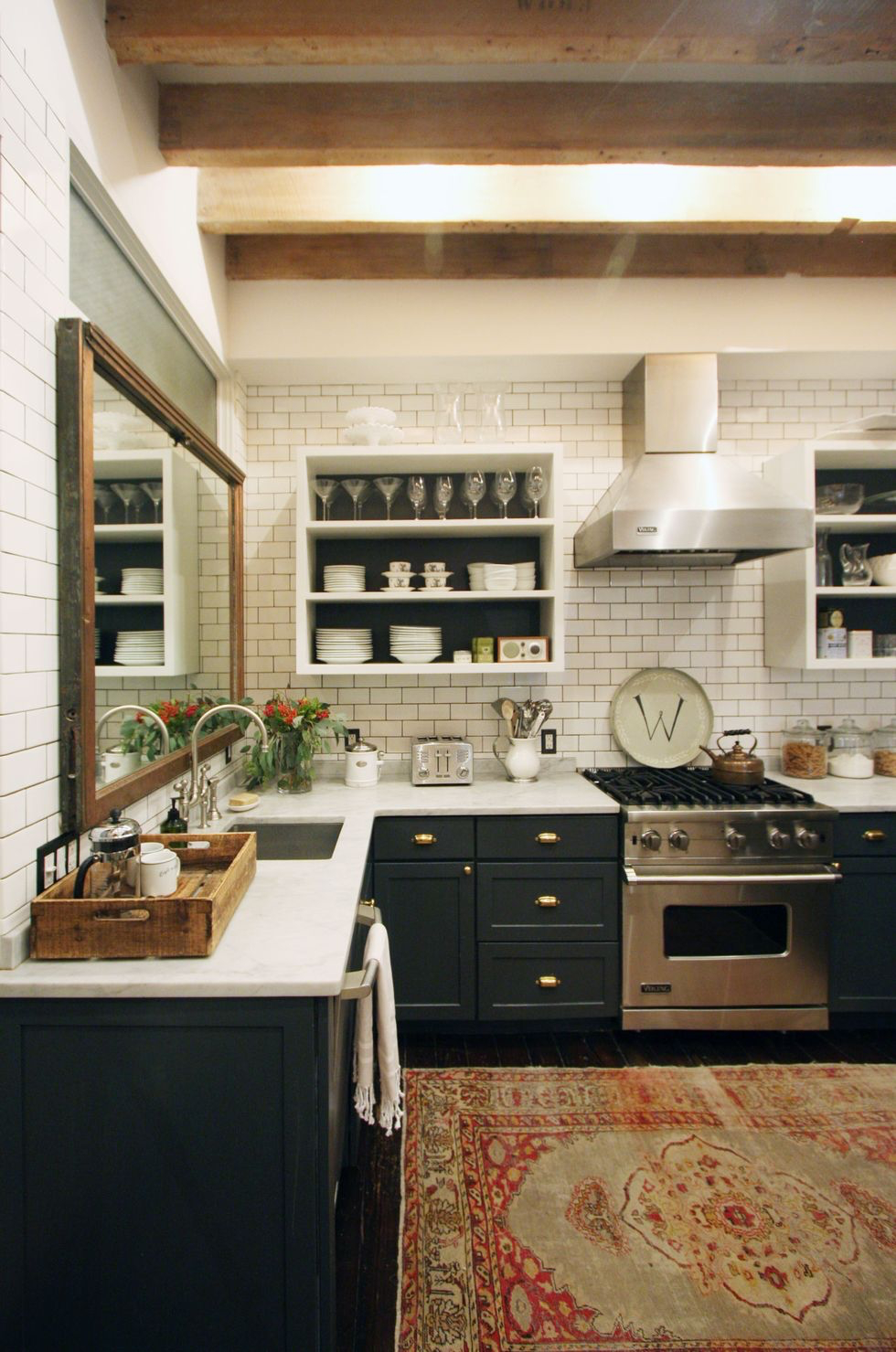
Functionally, it can also create a weird feeling of being pushed back out of the house. Traditional design philosophies sometimes describe this as good energy bouncing right back out the door. Whether you believe in that or not, the psychological effect is real. An entryway should feel like it’s welcoming you in, not reflecting you away.
A better way: Put the entryway mirror on a wall next to the door (perpendicular). That way, as you step inside and turn, you see the reflection. It still catches all that great light from the open door and expands the space, but without that startling, in-your-face effect.
2. Directly Facing Your Bed
Your bedroom should be your sanctuary, a place for calm and rest. A big mirror facing the bed can mess with that vibe. Even when you’re asleep, your brain is sensitive to light and movement. A mirror can catch passing car headlights or the glow from your phone and bounce it right at you, causing little sleep disturbances you might not even notice.
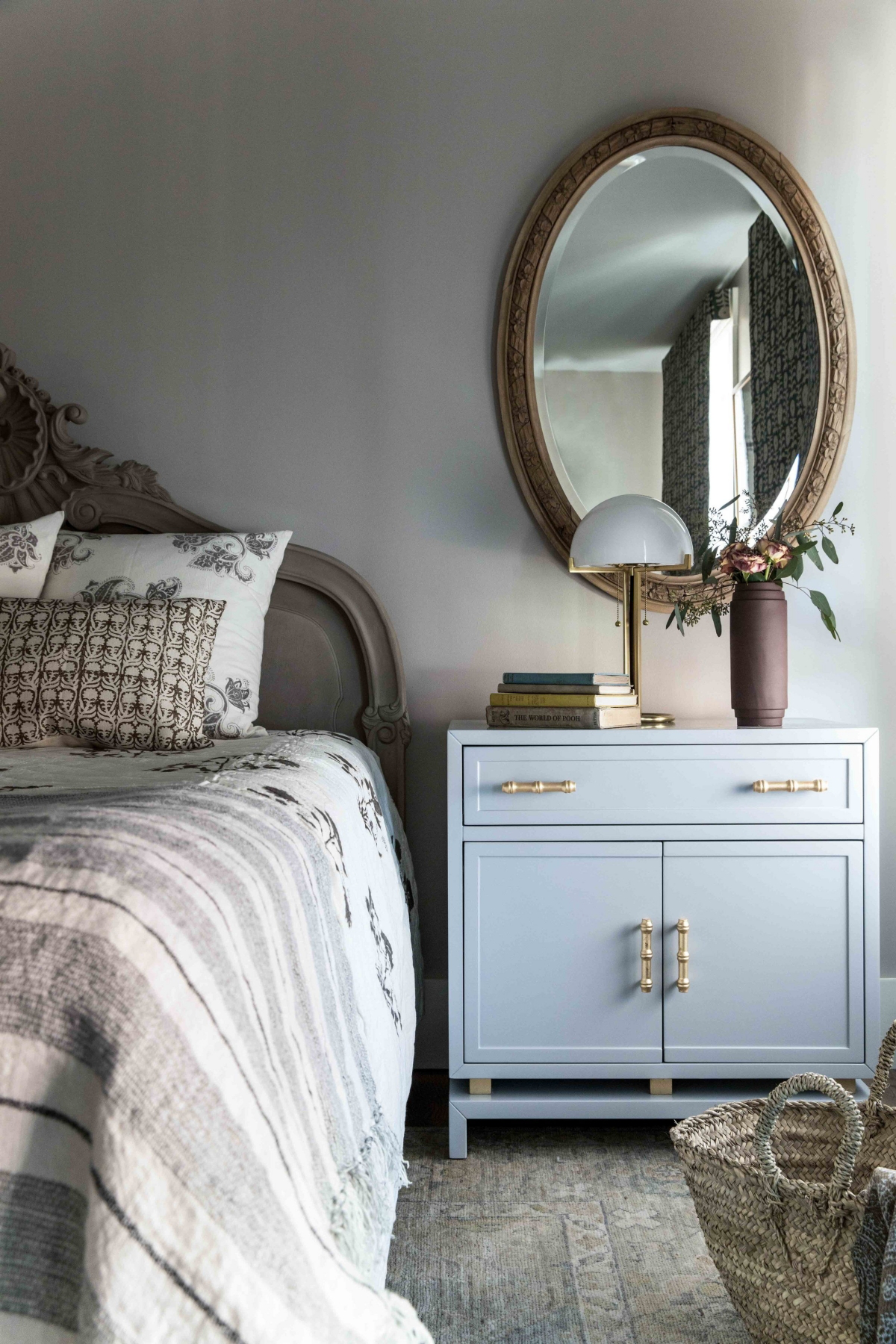
Even more, there’s the motion factor. If you toss and turn, your peripheral vision catches that movement in the reflection. This can trigger a subtle alert in your brain, pulling you out of a deep, restful sleep. I worked with a couple who couldn’t figure out why they were sleeping so poorly after installing new mirrored closet doors. I suggested they tape up some sheets over them for a week as a test. They called back amazed at how much better they slept and ended up replacing the doors.
A better way: If you need a full-length mirror in the bedroom, the inside of a closet door is the perfect spot. It’s there when you need it and hidden when you don’t. Another great option is to place it on the wall where your headboard is, so it’s not visible from the bed at all.
3. Anywhere Near Kitchen Grease and Heat
Every now and then, I get a request for a mirror in the kitchen, usually as a backsplash. While it might look cool for a minute, it’s a maintenance nightmare. A kitchen is a work zone, and splatters from grease and steam are just part of the deal. On a tile or stainless steel surface, it’s no big deal. On a mirror, it’s a constant, streaky mess that’s nearly impossible to keep clean.
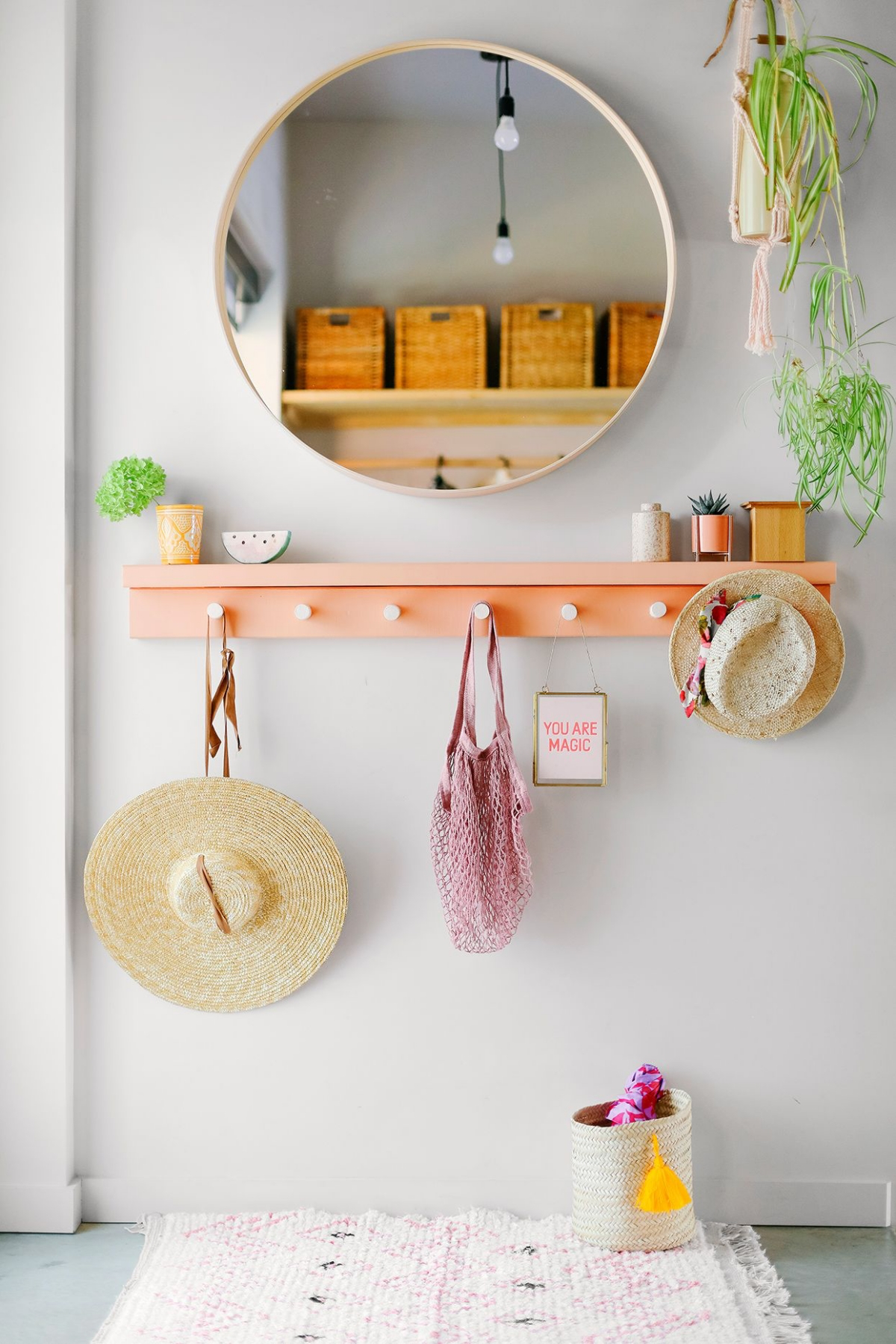
My go-to for a streak-free finish on any mirror, by the way, is a simple 50/50 mix of white vinegar and water in a spray bottle. Use two microfiber cloths: one to wipe it down and a second, completely dry one to immediately buff it to a shine.
But back to the kitchen—there’s also a safety issue. Standard mirrors aren’t made for the rapid temperature swings near a stovetop. Extreme heat or a splash of cold water can cause thermal shock and crack the glass. More likely, though, the heat and steam will slowly destroy the mirror’s reflective backing, causing ugly black spots to appear. This is called desilvering, and once it happens, the mirror is ruined.
A better way: If you want that reflective quality, go for a more durable material like polished stainless steel panels or a high-gloss tile. If you absolutely must have a mirror, place it far from the stove and sink, maybe in an adjacent breakfast nook where it can reflect a nice window view without getting covered in spaghetti sauce.
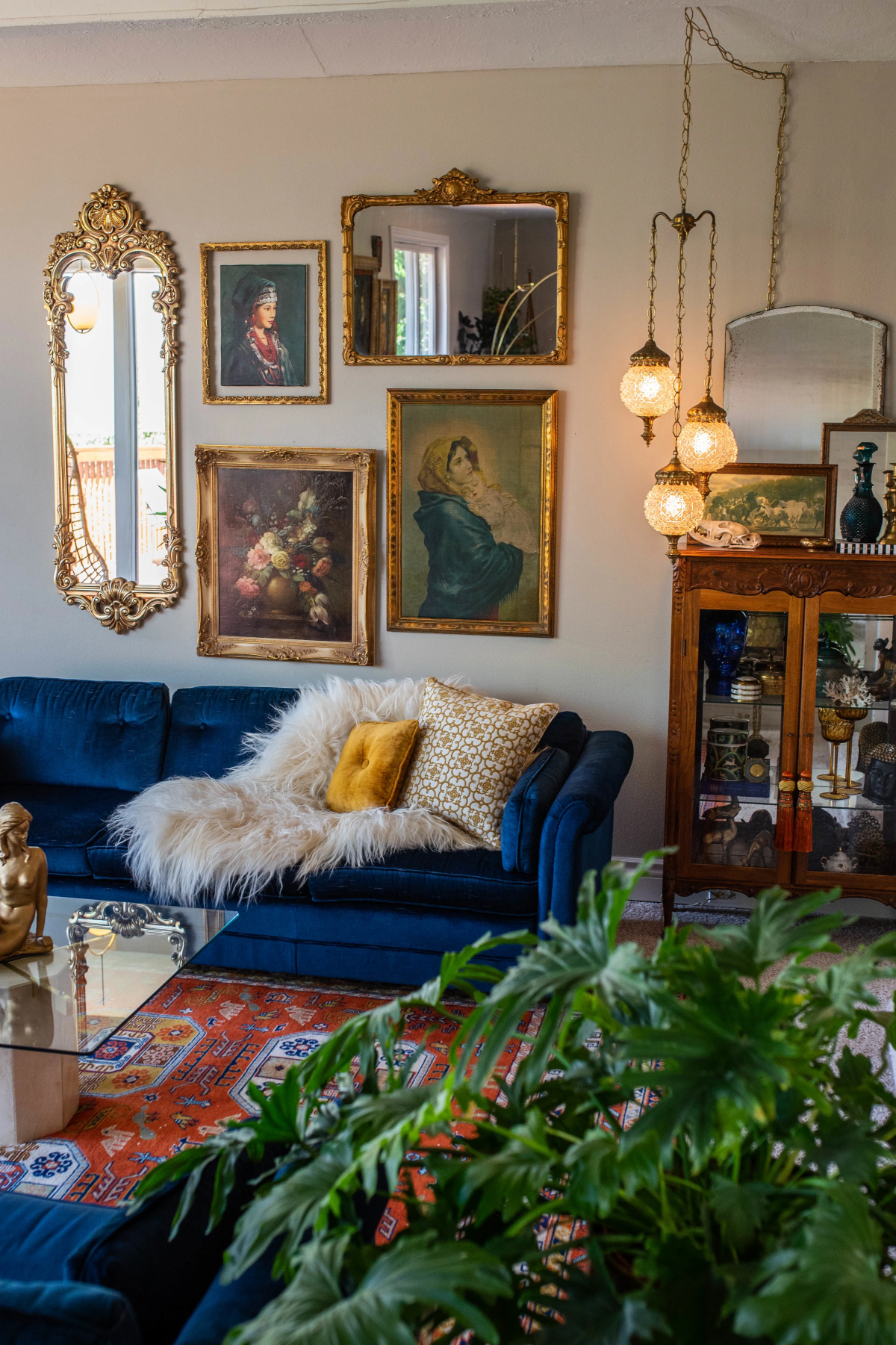
4. Reflecting Clutter or a Bad View
This is the golden rule: a mirror will double whatever it sees. It doesn’t care if it’s a beautiful piece of art or a pile of laundry. If you hang a mirror opposite a window with a garden view, you’ve just brought more nature inside. If you hang it opposite a cluttered desk or the toilet… well, you’ve just amplified the chaos.
Think of it like this—your mirror should reflect things you want more of in your room.
- Best things to reflect: Windows (especially with nice views), chandeliers or cool light fixtures, artwork, doorways to other rooms, or architectural details.
- Worst things to reflect: Cluttered desks or shelves, the toilet, a blank wall, your bed, or the TV.
Quick tip: Can’t get a helper to test a spot? Grab any small hand mirror and hold it flat against the wall where you’re thinking of hanging the big one. Walk around the room—this will show you exactly what the final reflection will be from every angle. It’s a simple trick that saves a lot of nail holes!
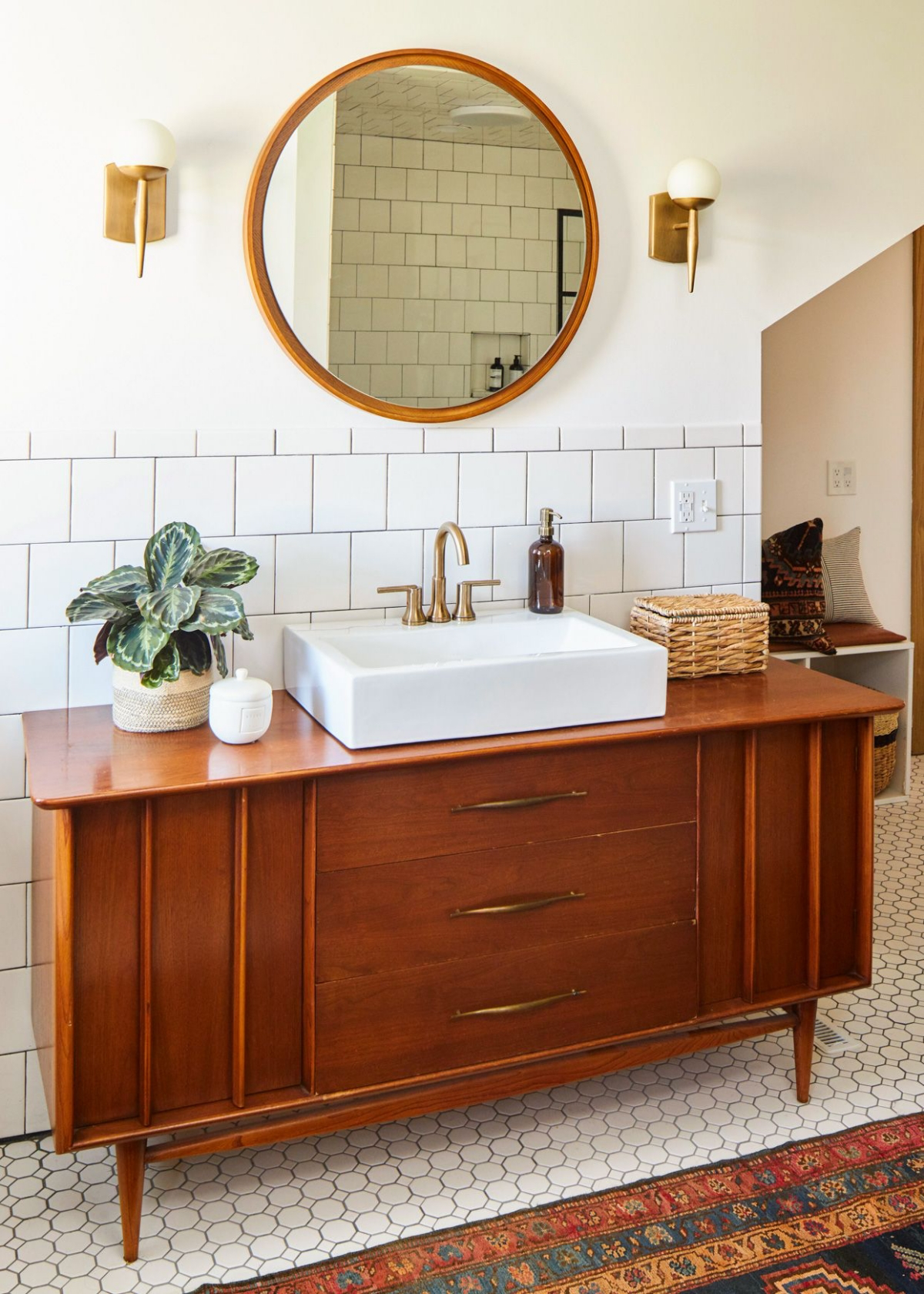
Getting the Installation Details Right
Once you’ve found the perfect spot, hanging it correctly is everything. A poorly hung mirror is a major hazard.
Getting the Height Just Right
One of the most common questions I get is how high to hang a mirror. The general rule of thumb is to hang it so the center of the mirror is at eye level for an average-height person. This usually means the midpoint is about 60 to 65 inches from the floor. This works great for hallways, bedrooms, or any open wall.
But what if you’re hanging it over a piece of furniture like a console table, a buffet, or a sofa? In that case, the ‘eye-level’ rule goes out the window. Instead, you want to hang it so the bottom edge of the mirror is about 4 to 6 inches above the furniture. This creates a visual connection, making the two pieces look like a cohesive unit instead of just floating separately on the wall.
Pro-Level Hardware and Safety
Please, for the love of your walls, do not hang a heavy mirror from a single nail and a flimsy piece of picture wire. That’s the #1 cause of shattered mirrors. The wire puts all the stress on one tiny point on the frame and the wall, and it will fail eventually.
For a secure, professional-looking installation, you should use a system that distributes the weight. My go-to is a Z-clip, which you might also see called a French cleat. It’s a system of two interlocking metal brackets—one on the wall, one on the mirror—that is incredibly strong and keeps the mirror flush against the wall. You can find a set at any big box hardware store like Home Depot or Lowe’s for about $15-$25. It’s the best investment you can make for anything over 20 pounds.
Heads up! Mirrors are much heavier than they look. A standard 1/4-inch thick mirror weighs about 3.2 pounds per square foot. That means a 3-foot by 5-foot mirror is nearly 50 pounds! You absolutely must anchor it into the wall studs. You can find studs with a cheap electronic stud finder (around $20-$30) or by knocking on the wall—a hollow sound means just drywall, while a solid thud means you’ve found a stud.
To be frank, if your mirror weighs more than 35-40 pounds and you’re not 100% confident about finding studs, it’s time to call a professional. An installer might charge between $75 and $200, depending on the job, but that’s a lot cheaper than replacing a giant shattered mirror and patching a huge hole in your wall.
Did you know? Those sticky-back picture hangers are a mirror’s worst enemy. The constant, steady pull of a mirror’s weight will cause that adhesive to fail over time, often in the middle of the night. It’s just not worth the risk.
One last thing: for large mirrors in high-traffic areas like hallways, or in any room where kids play, consider safety backing. It’s a clear film applied to the back that holds the glass shards together if it breaks. Adding a safety backing typically adds about 15-20% to the cost of a custom mirror, but the peace of mind is priceless.
A Craftsman’s Quick Guide
If you just skimmed all that, here’s the bottom line:
- DO hang mirrors to reflect light and beautiful things (like windows or art).
- DON’T hang a mirror directly opposite your bed or the front door.
- DO test the reflection from all angles before you drill a single hole.
- DON’T use a single wire for a heavy mirror. Use Z-clips or French cleats.
- DO hang the mirror with its center at eye level (around 60-65 inches) or 4-6 inches above furniture.
A Final Thought
A mirror is a living part of your home. It changes throughout the day with the light and with the seasons. Choosing where to put it is a design decision that deserves a little extra thought. Don’t rush it.
And remember to trust your gut. A room should feel good to you. If a mirror’s reflection makes you feel uneasy or just… weird, that’s your brain telling you it’s in the wrong spot. By mixing a little practical knowledge with your own intuition, you can stop just decorating a wall and start truly enhancing your home.
Inspirational Gallery
Forget perfect symmetry. The latest trend in decorative mirrors embraces organic, fluid shapes. Often called ‘pond’ or ‘pebble’ mirrors, these frameless, asymmetrical pieces double as wall art. They break up the rigid lines of a room, adding a soft, natural touch that feels both modern and serene. Look for them to bring a sense of gentle movement to a hallway or above a console table.
More than 350 mirrors were used in the Hall of Mirrors at the Palace of Versailles, an unprecedented display of wealth and power in the 17th century when glass was a rare and costly luxury.
This historical use reminds us that mirrors have always been more than just functional objects. They are statements. An oversized, ornate gilded mirror, like those from RH, evokes this same sense of grandeur and intention, turning a simple wall into a deliberate feature of architectural beauty.
Does the type of mirror glass really matter?
For most uses, standard mirror glass is perfect. However, if you’re a purist or placing a mirror where color accuracy is key (like in a dressing room or opposite a vibrant piece of art), consider a low-iron or ‘HD’ mirror. Standard mirrors have a faint green tint from the iron in the glass, while low-iron options offer a crystal-clear, brighter reflection that shows truer colors.
Important point: For any mirror over 20 pounds, the single nail and wire method is a risk. Professionals often use a French cleat system. This involves two interlocking, bevel-cut brackets—one on the wall, one on the mirror. It distributes weight evenly across its length and ensures the mirror sits perfectly flush and secure against the wall. It’s the safest bet for those heavy, statement pieces.
- Creates a multi-faceted, brilliant light source.
- Adds texture and character to a blank wall.
- Offers the visual impact of a large art installation.
The secret? A well-curated mirror gallery wall. To get the look, gather a collection of small-to-medium mirrors. Vary the shapes and eras—a round sunburst next to a rectangular art deco piece, for instance—but unite them with a common frame color or material, like brass or black wood, for a cohesive feel.
Antique-style mirror: Its distressed or foxed glass (with dark spots and a smoky patina) brings texture, history, and a romantic mood. It’s less about a clear reflection and more about atmosphere. Perfect for a dining room or behind a bar.
High-gloss modern mirror: A piece with a colorful, lacquered frame, perhaps from a brand like Kartell, offers a pop of playful, contemporary energy. It’s a bold design choice that adds personality to a minimalist space.
Choose based on the feeling you want to evoke: mystery and depth, or clean, vibrant fun.
According to Feng Shui principles, a mirror facing the front door pushes away incoming positive energy (Chi).
Whether you follow the practice or not, the design logic holds up: a visitor’s first glance shouldn’t be of themselves leaving. Instead, place the mirror on a wall perpendicular to the door. It will still open up the entryway and bounce light without creating an unwelcoming or abrupt reflection.
Give a basic, frameless mirror a high-end makeover with a few simple techniques. You can instantly elevate its look and tailor it to your specific style.
- Frame it out: Use decorative wood trim, available at any hardware store, cut to size and painted or stained to match your decor.
- Add some glamour: Apply gold or silver leaf to the edges for a touch of antique elegance. Kits are widely available and surprisingly easy to use.
- Go for color: For a bold, modern look, simply mask off the mirror surface and paint the beveled edge or a border with a high-gloss spray paint in a vibrant hue.










